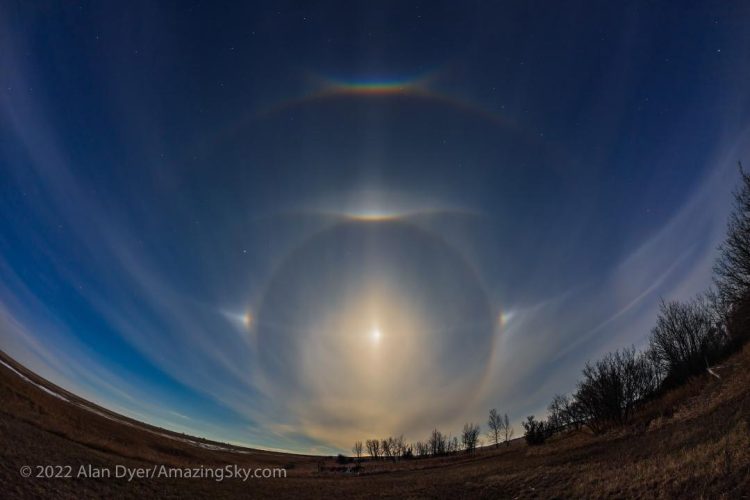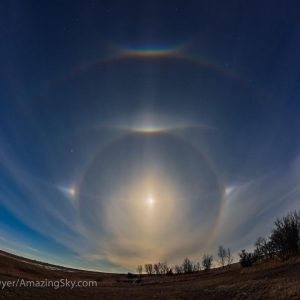Lunar Halo Complex
Description
An Astronomy Picture of the Day. From the photographer: “Last Friday night we had a very nice and complex halo display around the almost Full Moon, the best I had seen created by the Moon. It included for a time a 120° moondog, though just one to the west of the Moon — there was not enough cloud to the east to create a 120° moondog on that side. But the regular moondogs near the 22° halo were very bright. Some of the colours recorded here were visible to the eye.
Since I posted the images on social media a couple of people commented that what I had labelled as a 46° halo was really a “supralateral arc” often mistaken, as I did, for a 46° halo. But that’s where the supralateral arc should be for a Moon at 30° altitude, tangent to the circumzenithal arc, and with rainbow colours.
Also, I had labeled the moondogs as parhelia, but that’s the official name for sundogs. For moondogs it is paraselene, and the horizontal arc should be a paraselenic circle, I presume, not a parhelic circle. But I’m not sure if that’s the official term. My usual reference, Les Cowley’s AtOptics website appears to be down. But Robert Greenler’s classic book Rainbows, Halos and Glories seems to confirm the lunar equivalent is paraselenic. Move the slider on the image to show/hide labels.”
Technical details: 11mm TTArtisan full-frame fish-eye lens on the Canon R6




comments (86)